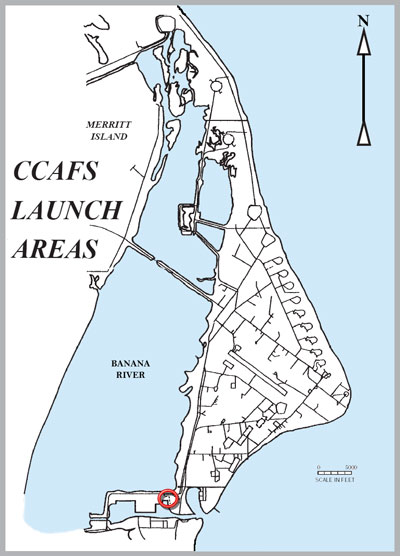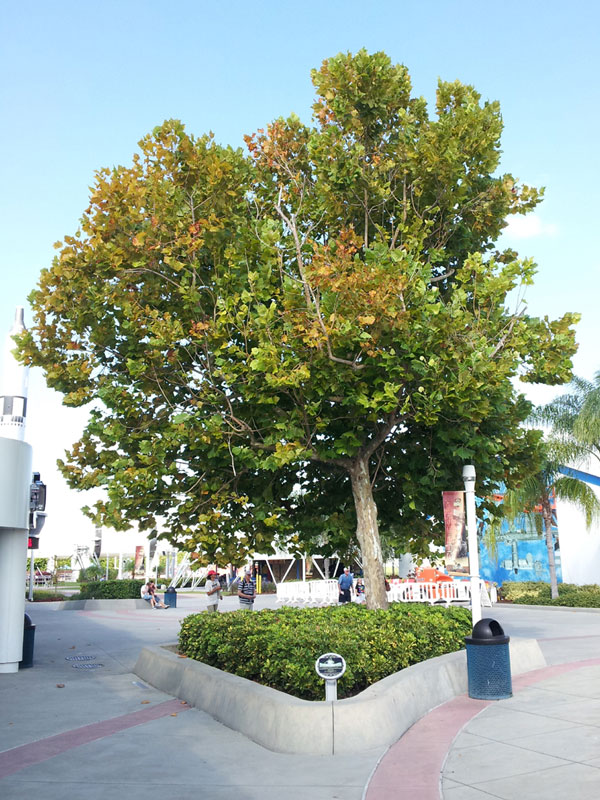
Photo Gallery
The Sycamore Tree
A Sycamore tree stands on the grounds just south of the cluster of buildings in which the History Center resides. The placement of the tree in direct alignment with a main sidewalk that suggests it was planned to be in that location and did not germinate by accident.
Making the accidental germination even more remote is the fact that no other Sycamore trees grow in the area. It is unusual for a Sycamore to be found naturally growing this far south in Florida.
The final tantalizing bit of information comes from a source who claims that the tree is what is known as a “Moon Tree” associated with the Apollo Program.
Legend Has It…
This story currently falls into the classification as a legend. Not because it isn’t true, but because we haven’t found definitive proof or documentation that it is true. At least, not yet.
The Apollo Program
The background begins with the Apollo 14 mission. Astronaut Stuart Roosa was a once a “smoke jumper,” a firefighting specialist who would parachute into an isolated area to fight a forest fire. Rousa was the Command Module Pilot for Apollo 14 and orbited the Moon during the landing phase of the mission.
By agreement with the National Forest Service, Rousa also carried 500 tree seeds on the mission and those seeds orbited the Moon with him in the Command Module. The seeds were Loblolly Pine, Sycamore, Sweet Gum, Redwood and Douglas Fir.
Planting New Trees
After the flight, most of the seeds germinated successfully by the Forest Service and some of the seedlings grew into trees that were later compared to non-mission earthbound trees to study any differences. Reportedly, no differences were noted.
Other seedlings were ceremonially distributed to educational institutions, governmental agencies and other organizations. These seedlings grew into what became known as “Moon Trees.”
Incomplete Records
The United States Bicentennial celebration followed several years after the Apollo 14 mission and was used as a background for some of the seedling presentations. However, a complete record of each seedling was not maintained. As a result, the ultimate whereabouts of only a small percentage of the 420-450 germinated seedlings can be verified.
Locally, one of the Sycamore seedlings was presented to NASA and planted in the Kennedy Space Center Visitor Complex. It still stands in the visitor complex rocket garden with a sign explaining its heritage.
Legend Origins
Here is where the story of the Moon Tree across the river at Cape Canaveral becomes a legend.
The occupants of the building cluster at the time that a Moon Tree would have been planted (after 1974) was the Florida Solar Energy Center. The group began setting up operation about that time and eventually installed all sorts of solar energy exhibits and demonstrations. They reportedly have no records of a ceremonial Moon Tree being planted.
Evidence?
Aerial photographs from that era show no evidence of a tree. In fact, a solar array in the immediate area would have make planting a large tree counterproductive to the solar panels.
However, a 1989 aerial photograph of the Solar Energy Center does show the shadow of a tree in exactly the same location as the present Sycamore. The 1989 tree is estimated to be about 6 feet in height. A seedling germinated before 1975 would have grown to more than 6 feet by 1989. The present tree is in excess of 30 feet in height.
Mysterious Moon Tree
One would think that a newsworthy event such as the planting of a Moon Tree would have been reported by local media and perhaps even generated invitations. No recorded story has yet been found of such an event.
So, whether the Sycamore in question is a first generation Moon Tree, a second generation Moon Tree germinated from seeds of an original Moon Tree, or a Sycamore that was planted simply for shade remains in the realm of mystery and legend.
Related Pages:
- CCSFS Markers, Memorials, Sites, and Stories
- Graduate Engineering Education Systems (GENESYS) Facility
- SunDay Time Capsule


